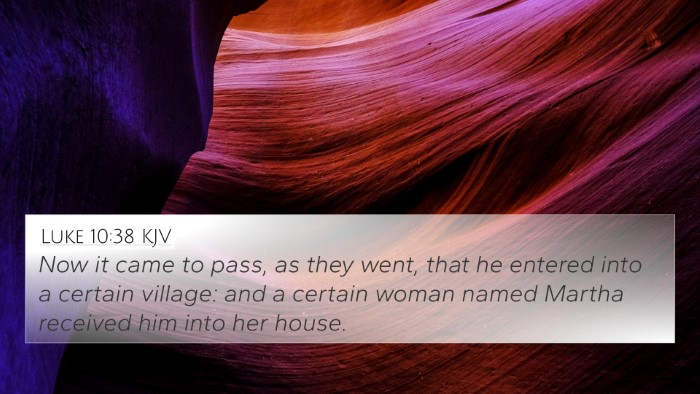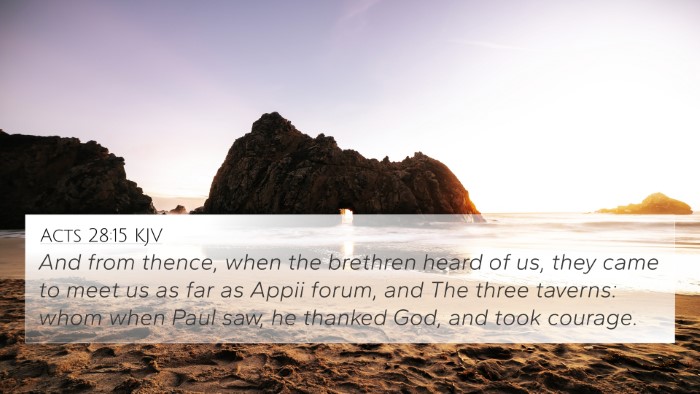Understanding John 11:20
Verse: John 11:20 - "Then Martha, as soon as she heard that Jesus was coming, went and met him: but Mary sat still in the house."
Summary of the Verse
This verse encapsulates a moment of personal and emotional response by two sisters, Martha and Mary, in light of Jesus' arrival after the death of their brother Lazarus. This reaction showcases varying expressions of faith and interaction with Jesus, highlighting Martha's readiness to engage and Mary’s more contemplative approach.
Insights from Public Domain Commentaries
-
Matthew Henry:
Henry notes the contrast between Martha and Mary, illustrating their differing approaches to grief and faith. Martha's quick response to Jesus reflects her proactive nature and her desire for understanding, whereas Mary's seated posture symbolizes a more reserved, introspective demeanor in the face of loss.
-
Albert Barnes:
Barnes comments on Martha's eagerness to meet Jesus as a sign of her active faith. He suggests that her immediate action upon hearing of Jesus' arrival indicates her understanding of His power and divinity. This urges readers to respond with action when faced with spiritual opportunities.
-
Adam Clarke:
Clarke highlights the familial dynamics at play in this scene. He points out that Mary's quietness may reflect a deeper sorrow, as she stays behind, honoring her grief, while Martha confronts Jesus more directly, which illustrates the spectrum of human emotion in the face of tragedy.
Cross-References and Thematic Connections
John 11:20 serves as a pivotal point linking various Biblical themes. Below are cross-references that align with the teachings and events surrounding this verse:
- John 11:1-3: The introduction of Lazarus’ illness and the sisters' initial call for Jesus signifies the profound relationship they have with Him.
- Matthew 11:28: Jesus invites the weary to come to Him, a theme that resonates with Martha's action of seeking Jesus actively.
- Luke 10:38-42: The earlier encounter with Martha and Mary, which plays out their respective personalities and roles in their relationship with Jesus.
- Psalms 34:18: "The LORD is near to the brokenhearted," which reflects the emotional state of both sisters in this context.
- 1 Thessalonians 4:13-18: This passage offers insights into the Christian understanding of death and hope, which can provide solace to those who grieve, as Martha and Mary do.
- Romans 12:15: "Rejoice with those who rejoice, weep with those who weep," emphasizing the importance of empathy and presence in times of sorrow.
- John 14:1-3: Jesus assures His followers of eternal life, which frames the context of His miraculous acts concerning Lazarus.
Comparative Analysis of Themes
The interactions in John 11:20 serve as a comparative study of faith expressions. Martha's approach can prompt discussions on proactive faith, while the contrast with Mary opens avenues for exploring contemplative faith. This dialogue between their responses resonates with broader biblical themes of personal engagement with Jesus amidst life's struggles.
Tools for Bible Cross-Referencing
For those studying scriptures, understanding themes like those presented in John 11:20 is enriched through:
- Using a Bible concordance to find related verses efficiently.
- Employing a Bible cross-reference guide to create connections between the text.
- Utilizing cross-reference Bible study techniques to delve deeper into thematic interpretations.
- Accessing comprehensive Bible cross-reference materials for extensive study.
Finding Cross-References in the Bible
When looking to uncover meaningful links, consider methods for:
- Identifying connections between the Old and New Testament to illuminate the cohesive narrative of scripture.
- Diving into comparative studies of the Pauline epistles to contextualize teachings across various letters.
- Exploring links between the Prophets and Apostolic teachings for a richer understanding of the Biblical message.
Conclusion
Ultimately, John 11:20 invites readers to explore their responses to Jesus amidst life's challenges. The interplay between active faith and contemplative grief provides a foundation for personal reflection and understanding. Cross-referencing this verse with others enriches the study experience, revealing the interconnected nature of the scripture.









